This feature was taken from our special Leadership in fleet report. Click here to read it.
Drivers already face a broad choice when deciding on a new car. The days of a fleet user simply picking a Ford or Vauxhall are long gone.
Even the premium market is changing. Audi, BMW and Mercedes-Benz must now compete for customers with the likes of Hyundai and Kia, as both brands take a step upmarket.
The recent success of these Korean carmakers among British consumers shows how receptive the UK market can be to Asian brands.
As legacy European brands struggle to transition their model ranges from internal combustion engines (ICEs) to electric powertrains, brands from overseas have an opportunity to swoop in and make their mark.
China has become the world’s largest producer of electric vehicles (EVs) in a short space of time and, while its footprint in Europe is only small at the moment, its vast pace of growth and ability to scale up quickly means Chinese EVs will become a much more familiar sight on our roads in future.
It’s expected that 10 new Chinese brands will launch in the UK by the end of the decade, offering an wider choice of vehicles to fleet managers and company car drivers.
SAIC

China’s largest carmaker is state-owned SAIC, headquartered in Shanghai. The group acquired MG in 2008 and moved production of all MG models to its Chinese plants in 2017.
The re-birth of MG took place in stages. It first established a fresh retail and aftersales network to sell a line-up of budget-friendly hatchbacks and SUVs. Electric models were then fed into the range, culminating in the recent launch of the MG 4. The latest MG is built on a fresh SAIC platform that was developed specifically for EVs.
It’s modular, so expect a full suite of new models in key segments to launch using the underpinnings.
MG has also unveiled the Cyberster electric sports car, which will debut in 2024.
It will be the brand’s halo model and represents its departure from the budget segment. SAIC also owns the Maxus commercial vehicle brand, which has a growing line-up of electric vans and currently offers the only electric pick-up truck to UK buyer
Geely

Another Chinese automotive superpower, Geely is probably the group that British drivers will have the most exposure to. Geely took over Volvo Cars in 2010, paving the way for an extensive overhaul of its models based on two new platforms.
The popular XC90 SUV was the first car to emerge. It was joined by the S90, XC60 and S60. The XC40 was the first model to feature an electric powertrain and now Volvo is gearing up to launch a new range of EVs as it seeks to remove all ICE variants by 2030.
While Volvo has been Geely’s biggest success story in the UK market, its decision to separate the Polestar tuning division and launch it as a separate brand has been significant and the majority of Polestar customers are fleets.
Polestar offers just one core model at the moment, but will have a full line-up in just a few years.
The Polestar 2 shares a platform with the Volvo XC40 and both brands will soon launch a large electric EV marketed as the Volvo EX90 and Polestar 3.
Geely’s platform-sharing strategy also extends to its relationship with Mercedes-Benz and Smart.
Geely bought 50% of Smart in 2019 and has just launched the #1, a compact electric SUV. It uses a new Geely platform and electric powertrain, which also underpins the upcoming Volvo EX30. Smart will build a complete line-up of models over the coming years.
As well as acquiring Smart, Geely also controls Lotus – another brand familiar to UK drivers. Lotus is trans - forming from a low-volume specialist carmaker to a premium EV brand.
The Eletre is its first model to launch and will be followed by more SUVs and a saloon.
New Lotus EVs will be built in China. Two more Geely brands are poised to launch in the UK this decade.
There’s Lynk & Co, which produces a range of models based on Volvo platforms, and Zeekr, a more upmarket brand that will be aligned with Polestar. Both are expected to operate via a direct sales model and utilise the Volvo retail network for aftersales care.
BYD
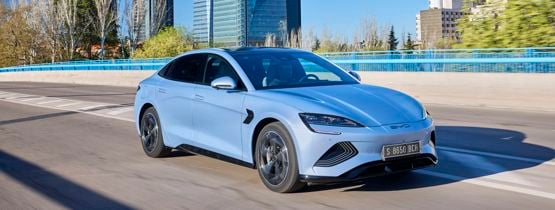
BYD – or Build Your Dreams – is a Chinese brand forging ahead with its UK launch plans. The Atto 3 compact SUV arrived in the spring, followed swiftly by the Dolphin hatchback.
Before the end of the year BYD will also launch the Seal, an electric D-segment saloon. The latter two form part of its Ocean series and are built on bespoke EV platforms.
BYD has already appointed a UK fleet sales director, Eric van Munsteren, and is promising lead times of less than three months for its cars.
Unlike a lot of new brands, the company is establishing a retail network and expects to have 100 sites by 2025.
Chery Automobile
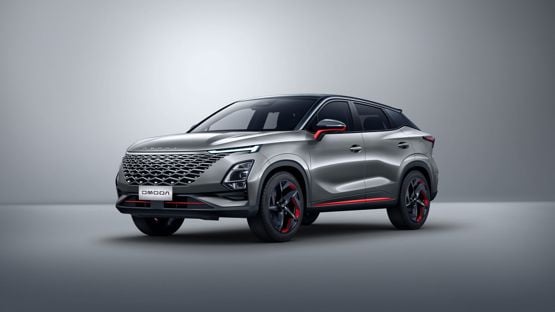
Chery is China’s biggest exporter of cars, with established customer bases in Asia, Russian and South America. It also produces cars under the Br brand for the Italian market. In the UK, Chery will introduce the Omoda – a new marque that was established last year. Sales of the first Omoda model are expected to begin in 2024. The Omoda 5 will spearhead the brand’s arrival. It’s a mid-size crossover that will sit in the same segment as the Nissan Qashqai. The maker is targeting 15,000 registrations of the Omoda 5 in the first year, a mix of fleet and retail, with both petrol and full electric available from launch. A full line-up of Omoda models will follow.
Great Wall Motors
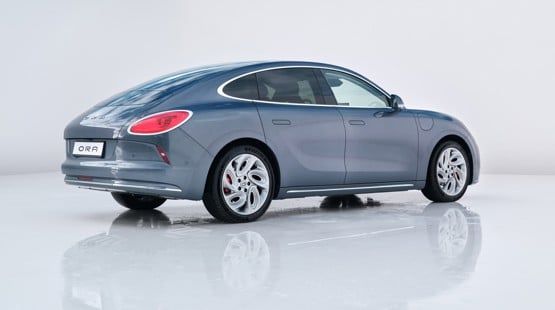
UK fleet buyers may be familiar with Great Wall as the producer of the Steed pick-up truck, which was the cheapest model in its segment at the time of launch.
While the Steed has long been discontinued, Great Wall introduced ORA, a new EV brand to the UK, last year.
The ORA Funky Cat went on sale in Autumn 2022, as a high-specification, retro-styled city car. In early 2024, ORA will expand its line-up with a new saloon car.
The yet-to-be named model will have a range of around 300 miles and a power output of up to 400PS.
Distribution of ORA models is handled by IM Group, in the UK, which also imports Subaru and Isuzu. As a result, there is already a growing network of sales and aftersales sites across the country.
AiWays
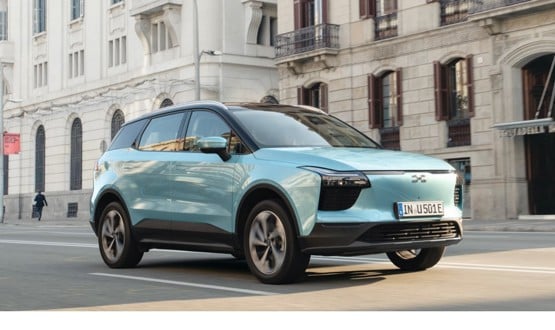
AiWays entered the Chinese market in 2017 as a start-up and has grown rapidly to the point where it is beginning its European expansion.
The carmaker planned to start selling vehicles in Europe in 2020, but its plans were put on hold during the Coronavirus pandemic.
It has already established itself in Germany, operating via a direct sales model, and has confirmed the UK will be the first right-hand drive market it will target.
The brand has two models: the U5 and U6.
Both are SUVs and use electric powertrains. The U5 competes with the VW ID4, while the U6 is larger and targets a more premium market.
Nio
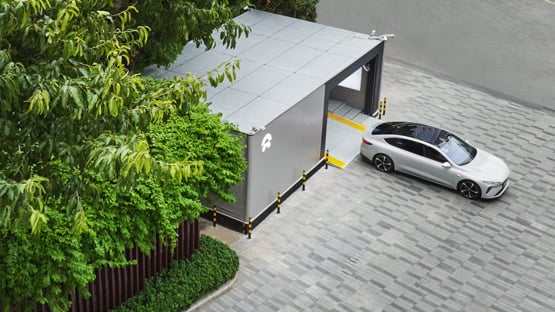
Nio is the Chinese brand with the biggest USP.
Unlike other EV manufacturers, Nio has developed a battery swap programme that enables drivers to swap their discharged battery for a new one in a matter of minutes.
The carmaker has already established a management team in the UK. Matt Galvin, formerly of Volvo, is the brand’s managing director, while ex-Honda fleet boss Marc Samuel will be national fleet sales manager.
Galvin confirmed, recently, that the brand’s UK launch was on hold until it could establish the necessary infrastructure to support battery swaps.
In China, Nio has installed more than 1,200 Power Swap stations. It is currently rolling out a network in Norway, the Netherlands and Germany.
Earlier this year, the brand unveiled a new electric estate and an electric SUV that will form part of its European line-up.
The ET5 will rival the BMW i5 Touring and offers a range of 270-350 miles, dependent on variant.
The EL6 will go head-to-head with the Audi Q8 e-tron and can cover 300 miles between charges.
Xpeng

Xpeng models will go on sale in the UK next year, as part of the brand’s European expansion.
Outside of its home market, Xpeng already sells electric cars in Denmark, the Netherlands, Norway and Sweden.
The company’s president Brian Gu confirmed Germany, France and the UK are next.
The Xpeng G6 electric SUV will be the first car to arrive on British shores. Based on a new platform, the G6 features 800v electrical architecture and can charge at speeds of up to 480kW.
Two powertrain variants are offered, which, in tests, achieved ranges of 360 and 469 miles.
Other Xpeng models, not yet confirmed for UK sale, include the G3 mid-sized SUV, P7 and P5 saloons and flagship G9 SUV.
Xpeng has developed its own charging network in China, similar to the Tesla Supercharger network, and is investing heavily in the development of self-driving technology.
HiPhi
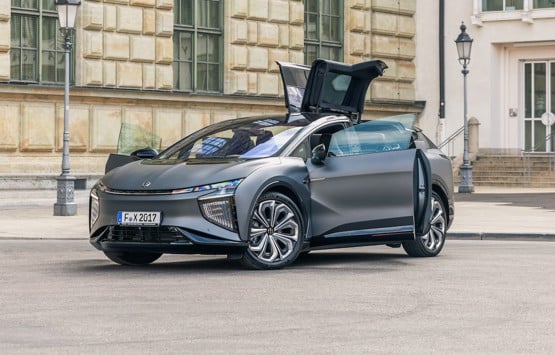
HiPhi’s arrival in the UK is expected by 2026.
The company produces high-tech premium cars with distinctive styling. It will be selling its first two cars, HiPhi Z and HiPhi X, in Europe by the end of this year.
The UK market will have to wait a little longer, however.
The HiPhi Z is a saloon car that sits alongside the Audi eTron GT and Porsche Taycan.
The HiPhi X is a Tesla Model X rival, complete with gullwing-style rear doors. A smaller crossover, HiPhi Y, is also on the cards for the brand’s European expansion.
As the role of fleet decision-maker (FDM) grows ever more complex, leadership is becoming a crucial quality.
Today's successful FDMs need to lead their teams, their drivers and their key stakeholders through a multifarious range of topics, from energy management to electric vehicles (EVs), and supply chain management to automated technology.
They need to be at the forefront of industry developments to guide their company and ensure the fleet meets the business needs in the most efficient and effective way.
Professional fleet leaders have the ability to implement policies successfully, adapting to an ever-changing environment.
They experiment and are first in line to trial new initiatives. They communicate clearly and often with those around them, helping to get buy-in to new ideas.
People leadership has risen up the list of priorities thanks to the greater focus on staff wellbeing, whether that's within fleet teams themselves or among the driving workforce.
The need to transition to EVs has opened the floodgates to a new vocabulary on workplace charging infrastructure (kW, resistors, cabling, capacity overload..), plus the creation of new relationships with the distribution network operators that would have been unheard of just three or four years ago. In each case, leadership is vital.
In this special Leadership in fleet report, we look at some of the areas having the greatest effect on the way fleets operate, offering advice and insight to give FDMs the confidence to make the right decisions and form best strategies.






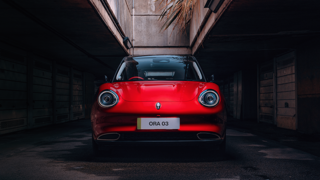


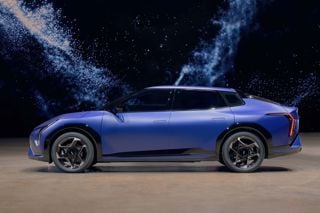












Login to comment
Comments
No comments have been made yet.